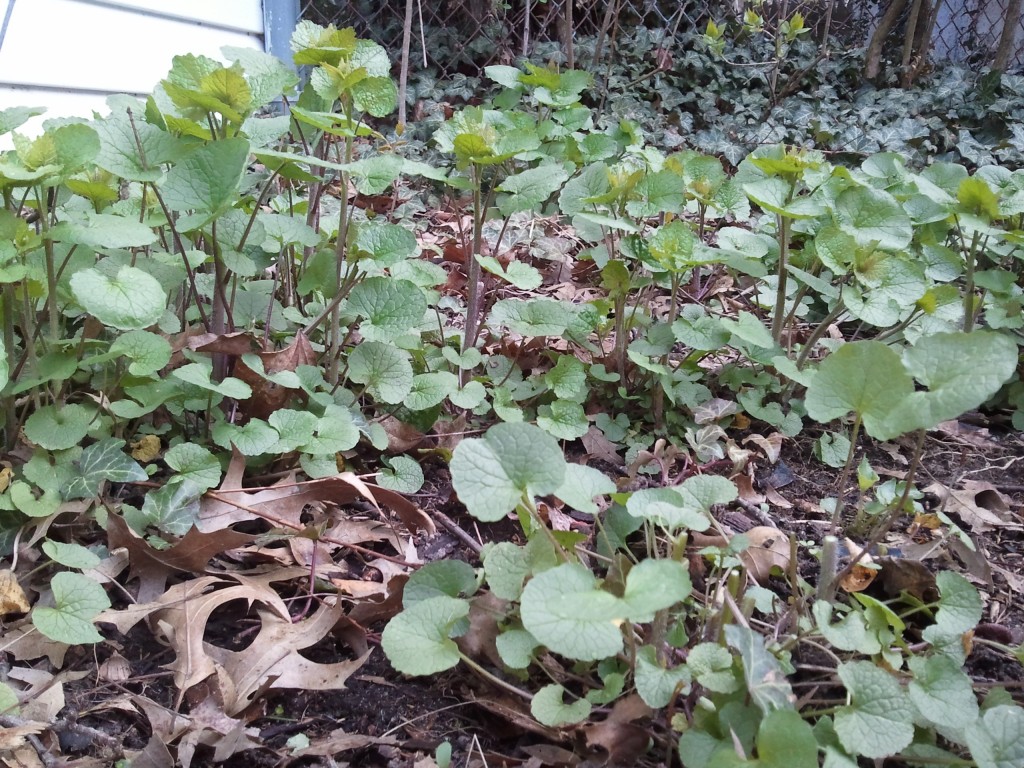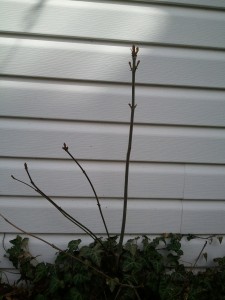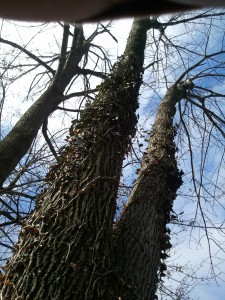My bride has always enjoyed puttering in the garden. But it wasn’t until she took a job at the Cleveland Museum of Natural History a few years ago that her interest started to take focus. She has become interested in native flora.
Among the many dimensions of this interest has been her evolution into the Eliot Ness of our yard – seeking out non-native invasive foliage and pulling it out by the roots for the betterment of other, law-abiding, plants.
One of her favorite targets is the Norway maple – a non-indigenous tree that simply loves the Cleveland Heights climate. I don’t like Norway maples because they are the very last plants in our yard to shed their leaves each fall. Every December, as the city collectors are making their last trip down the street, I’m cajoling golden leaves of Norway maple to finally let go of their branches and turn themselves in.
My wife’s issue with Norway maples is that they grow quickly, with little structure, stealing direct sunlight from anything else that might want to take root under their malevolent canopy. When we moved into our house 20 years ago, we had some Norway maple sprigs that looked like this.
We should have dealt with them when their offenses were still minor. So now we know better; a ban on new Norway maples is strictly enforced. Every spring, we round them up and toss them into a pile that becomes kindling for the fireplace – where these outlaws eventually pay their debt to society.
But for the past few years, Public Enemy No. 1 has been the garlic mustard that claimed a little patch in the lawless zone at the northeast corner of our yard – where property lines intersect and the back of a neighbor’s garage contributes to a sunny microclimate.

Several times each summer, my wife leads a raid on that patch, tearing out garlic mustard roots with malice, cursing and muttering as she works.
The plant doesn’t bother me, but my wife is apparently not alone in her concern. I Googled “garlic mustard” and the first return was the official website of King County, Washington – which defines garlic mustard as a Class A noxious weed. I don’t know if that’s a technical term. Still, I consider it an indication of the irredeemable nature of this plant that it rates specific mention on a government website.
But the other day, while in the car together, my wife and I heard a piece on NPR by Nancy Shute about urban foraging – literally finding food in the cracks of the sidewalk. The story dealt with a number of issues, such as the bounty of abandoned window boxes, and avoiding places where dogs like to pee.
Late in the story, a nutritionist mentioned garlic mustard. He said it’s always a great forage find; it tastes good and, to the best of his knowledge, it’s “the most nutritious leafy green ever tested.”
It’s still non-indigenous. And it’s still invasive. So my bride continues to work in the patch in the back, pulling out garlic mustard by the roots. But now when she mutters, it sounds like she’s saying something about making a salad.





Leave a Reply